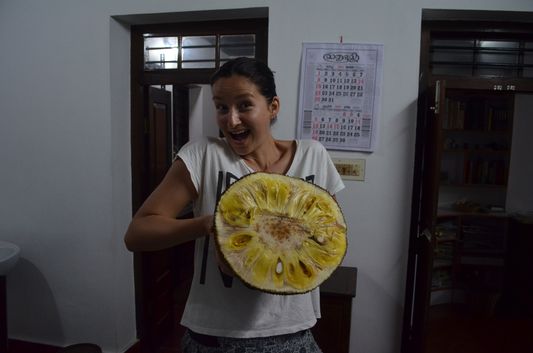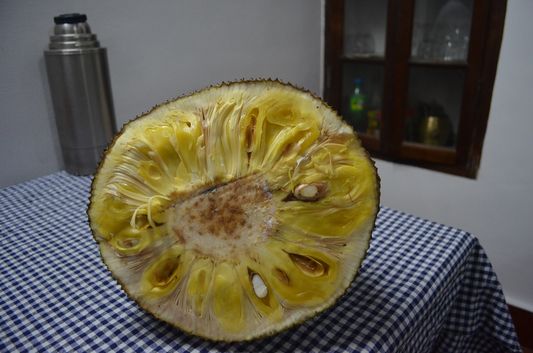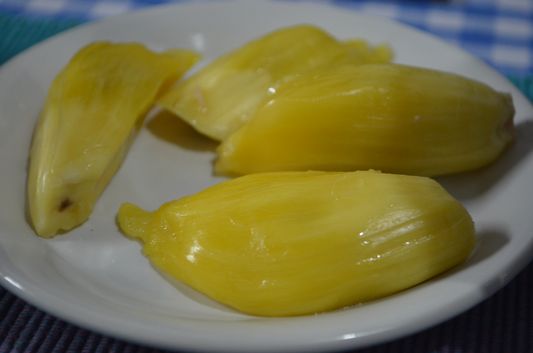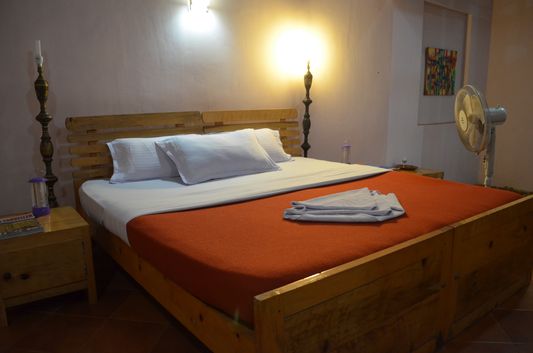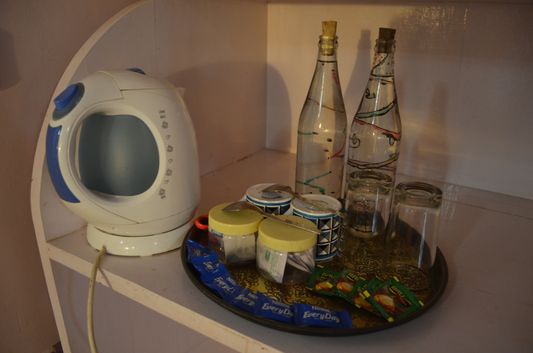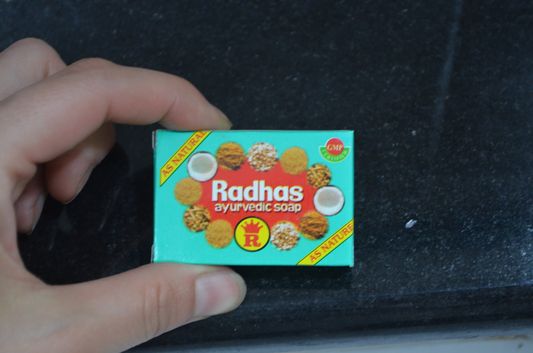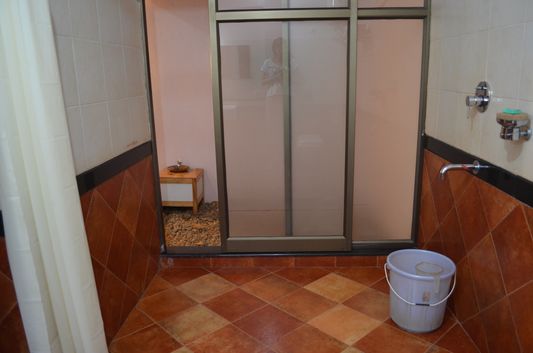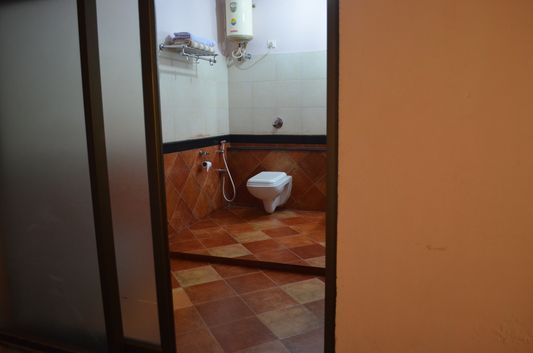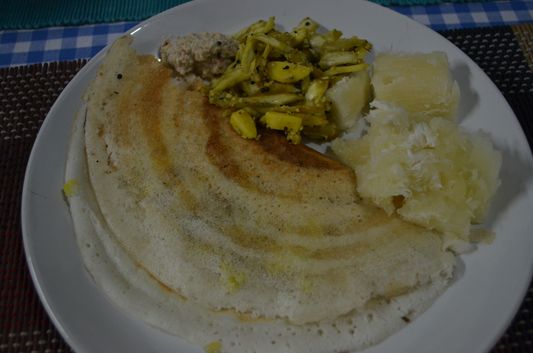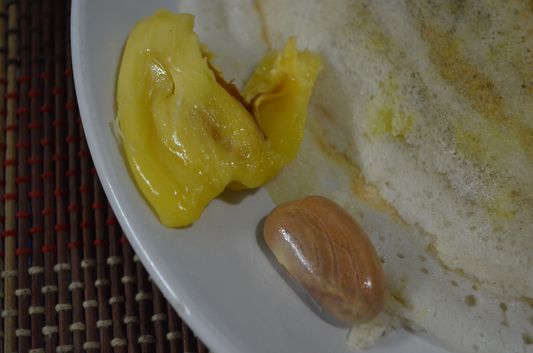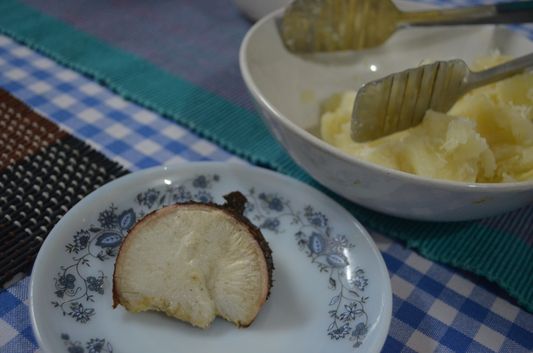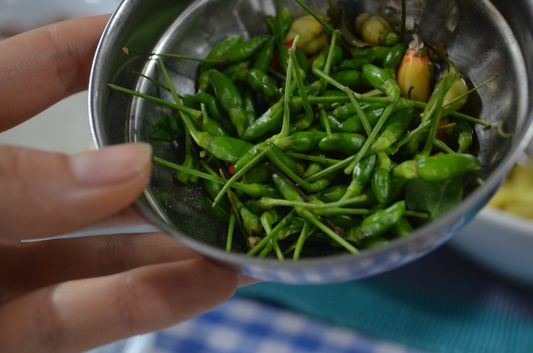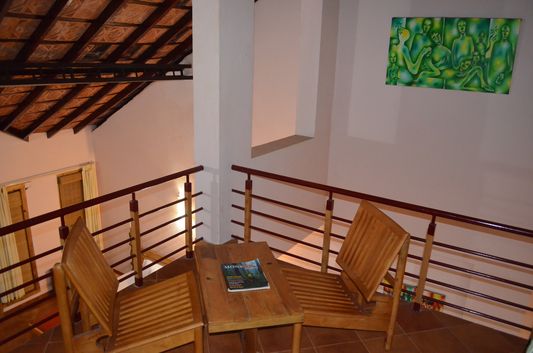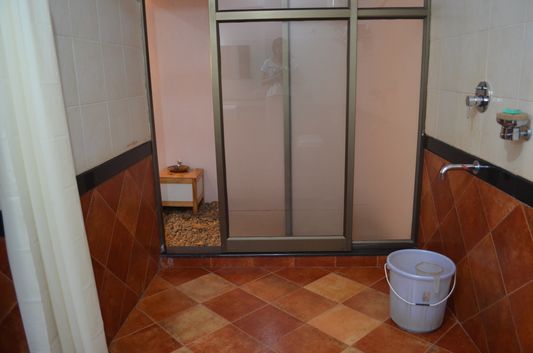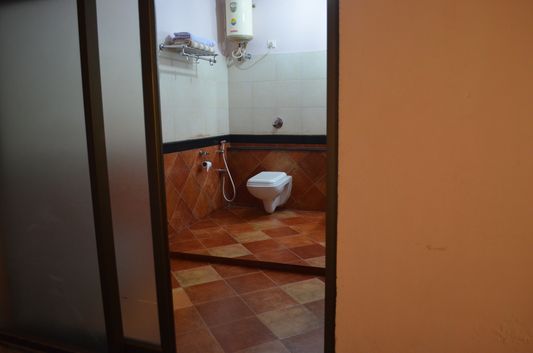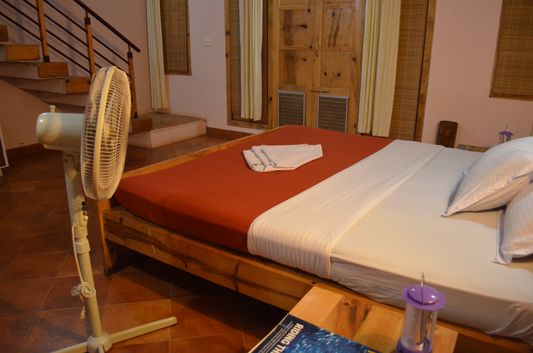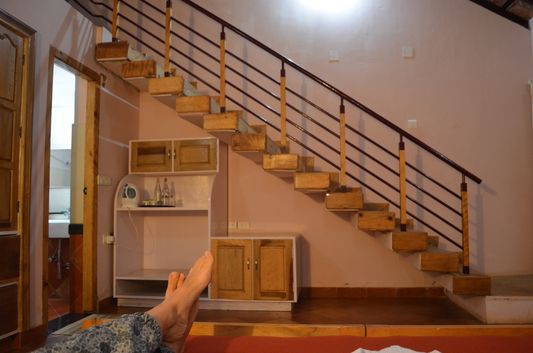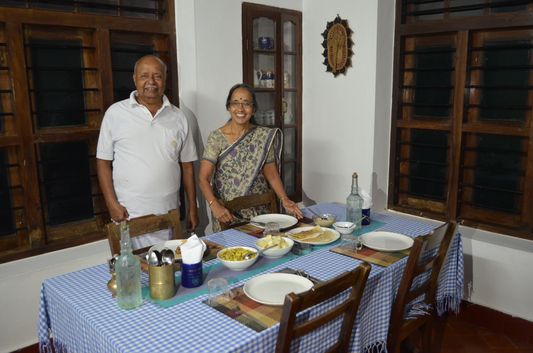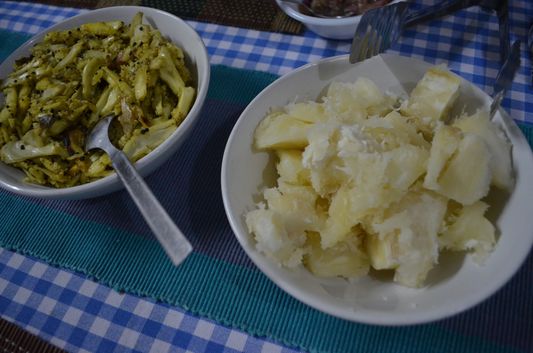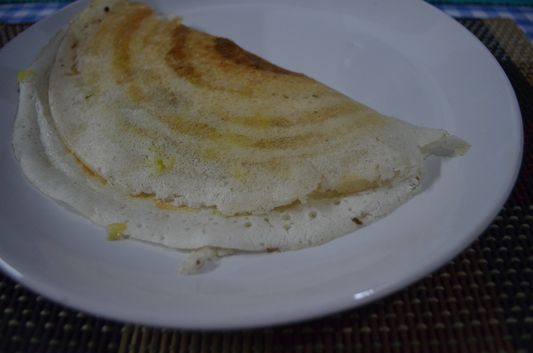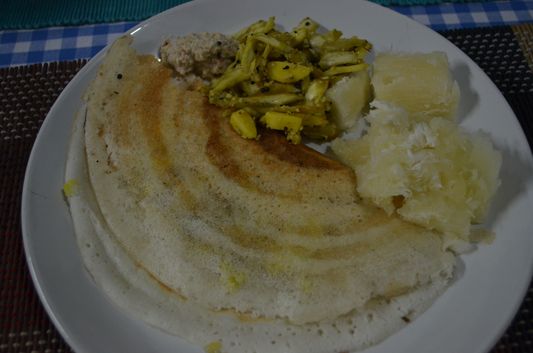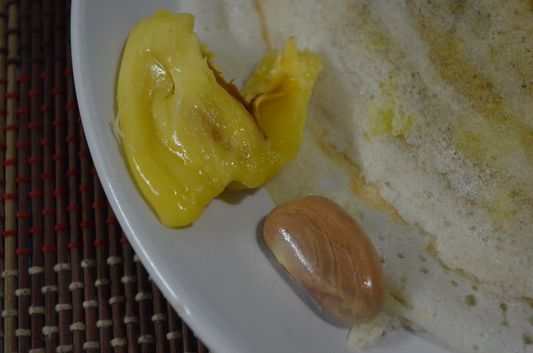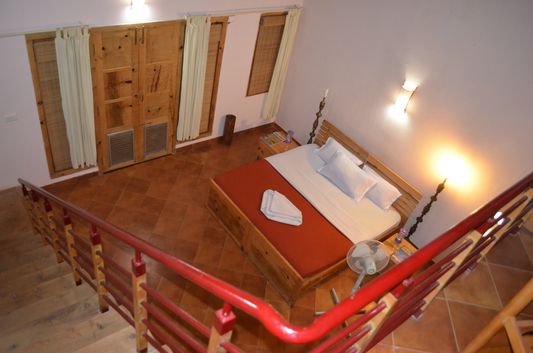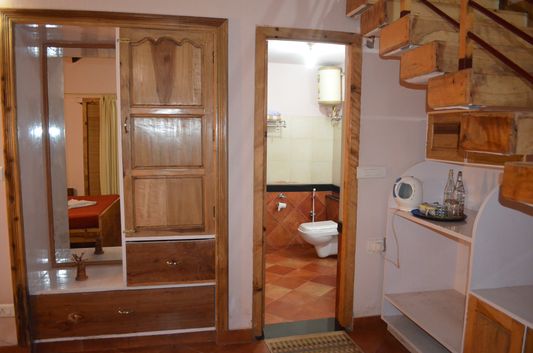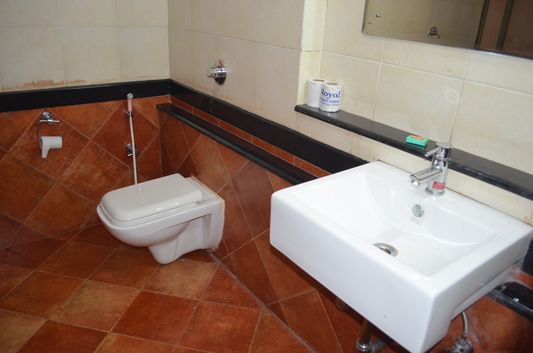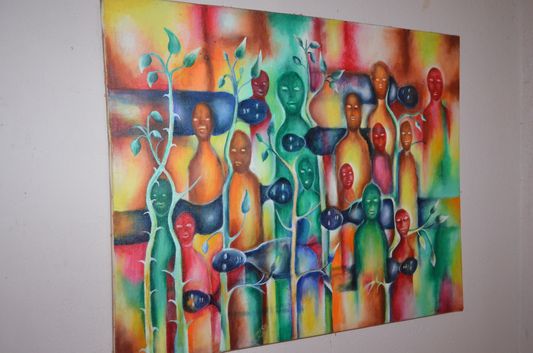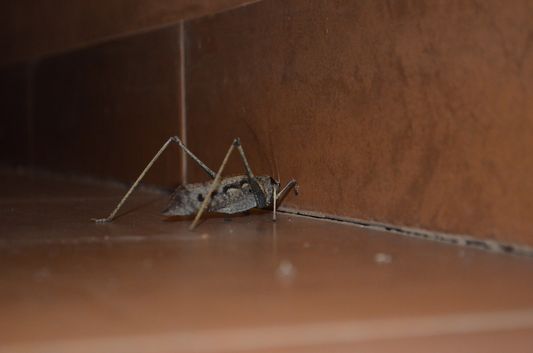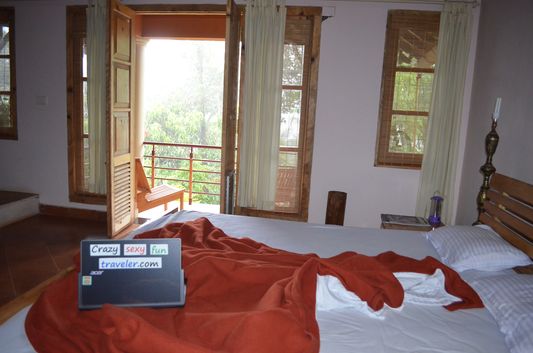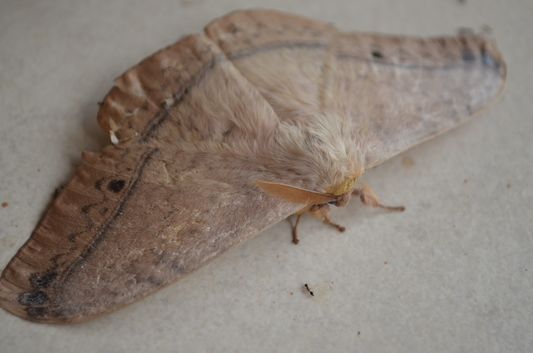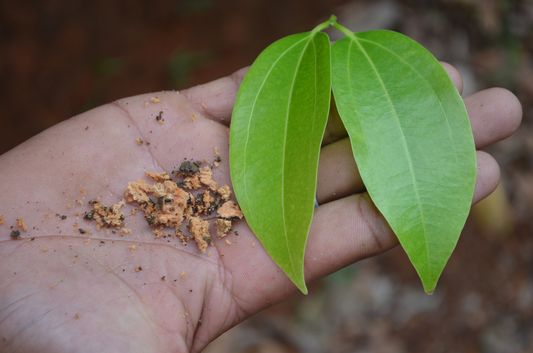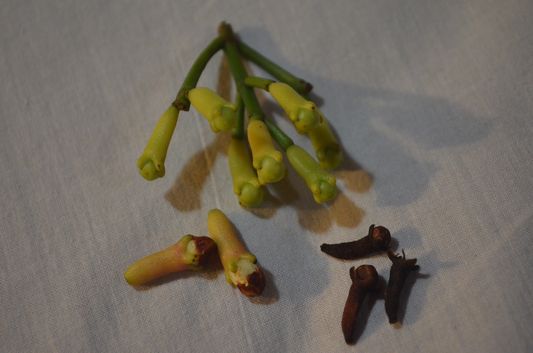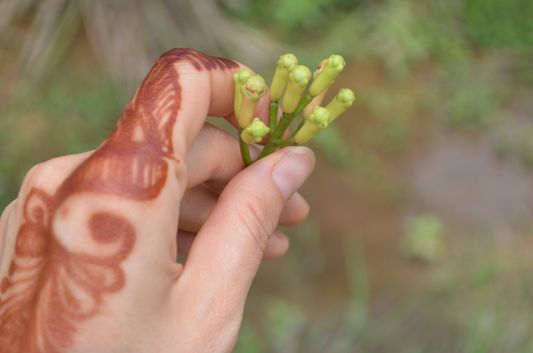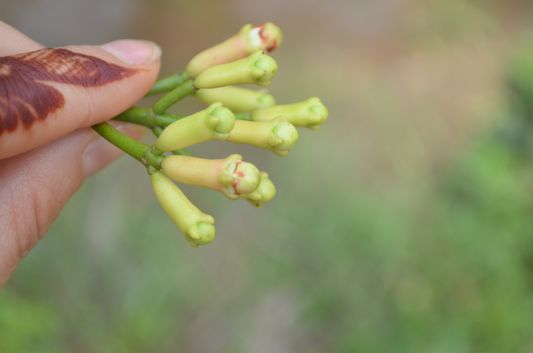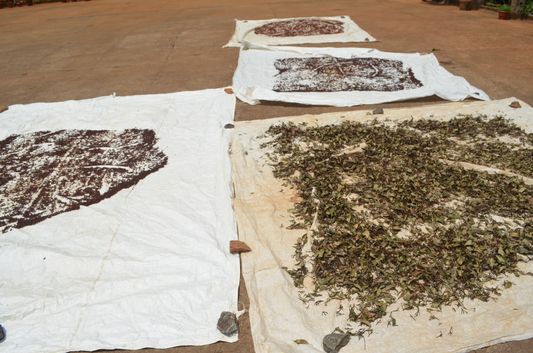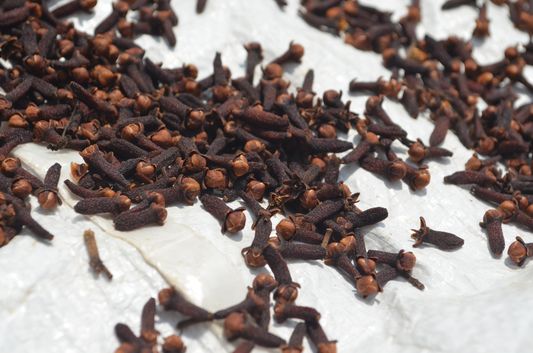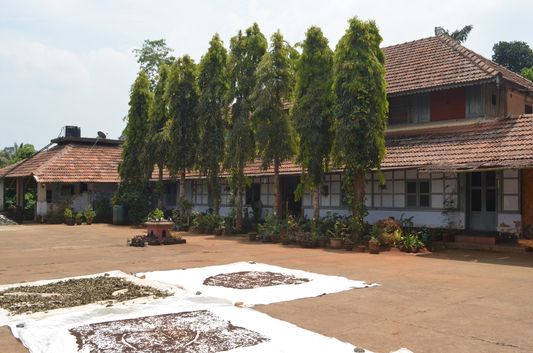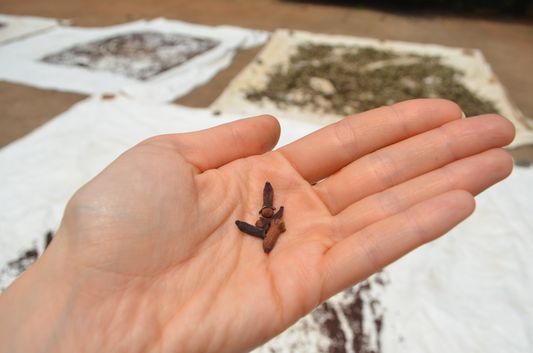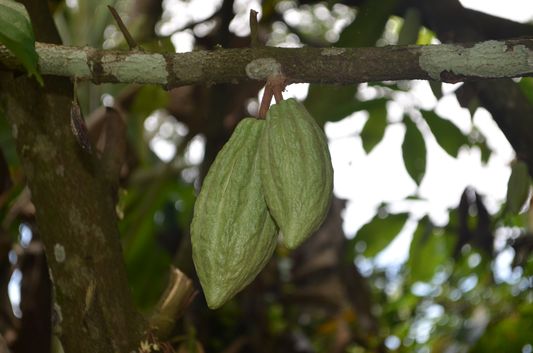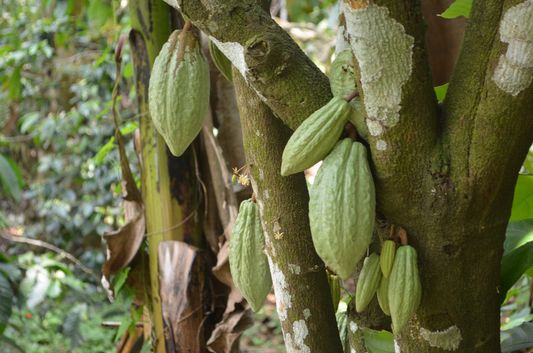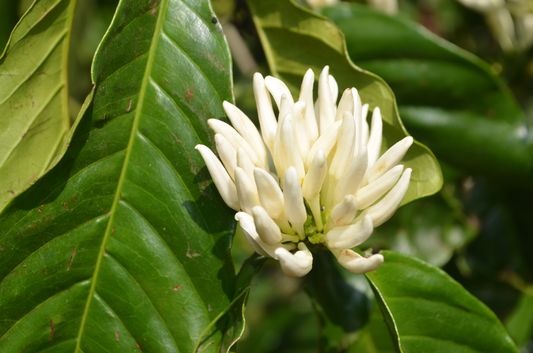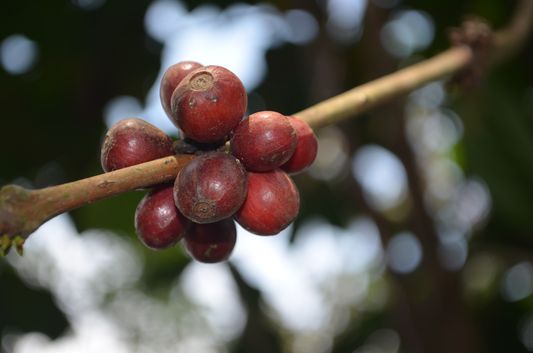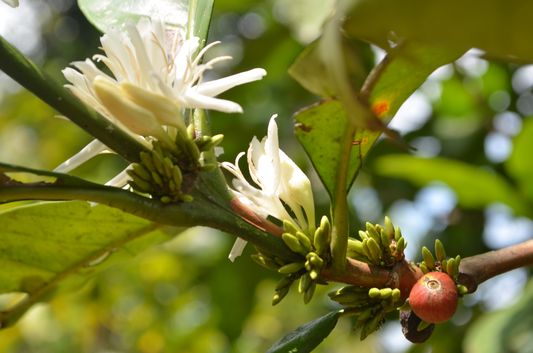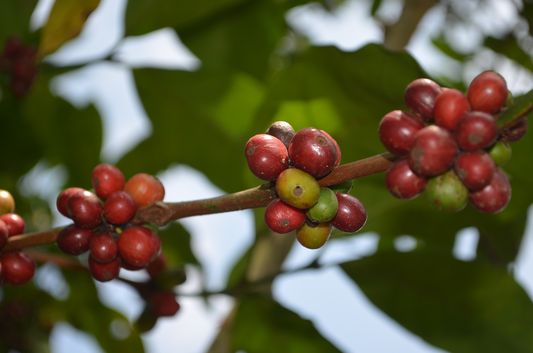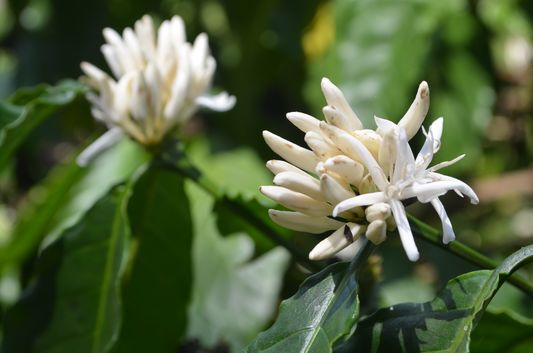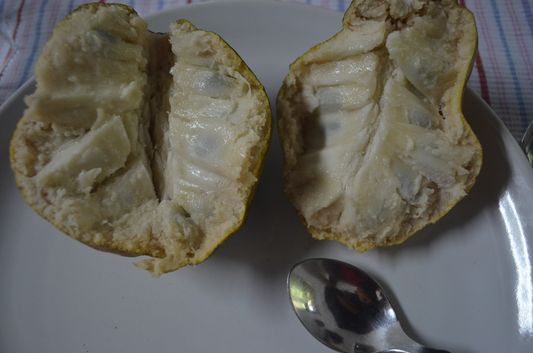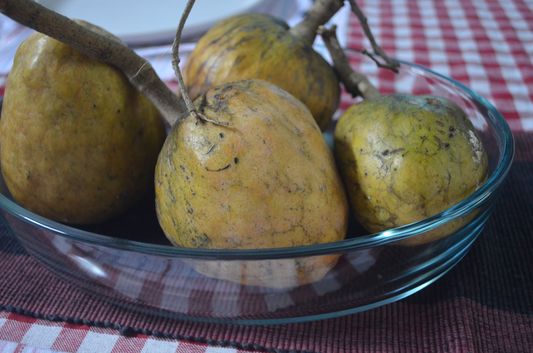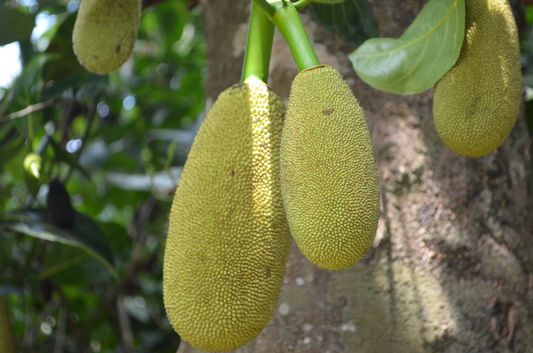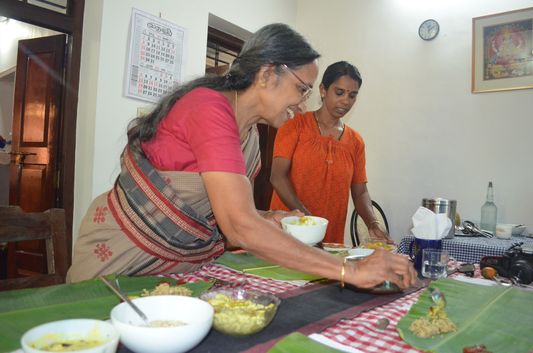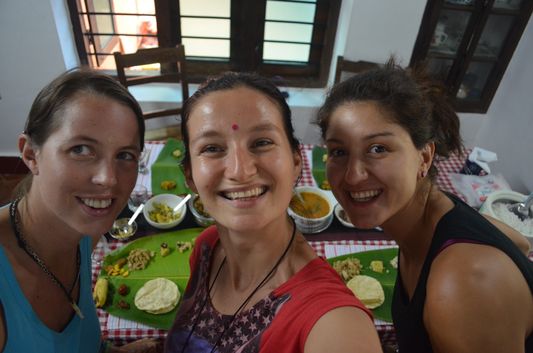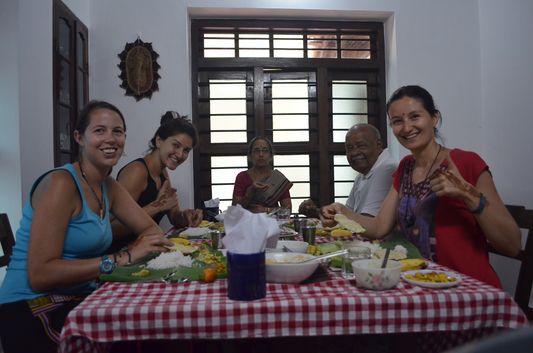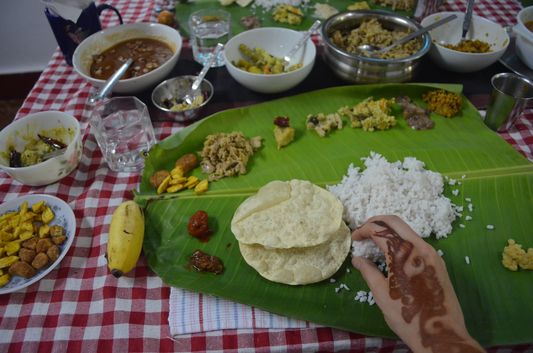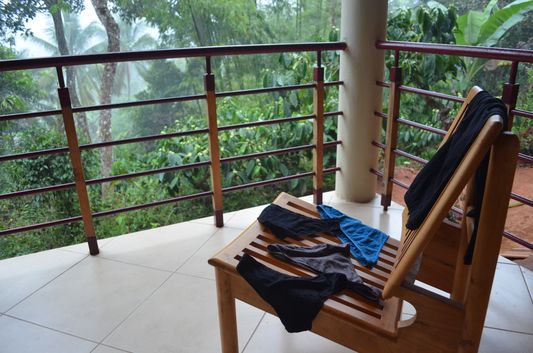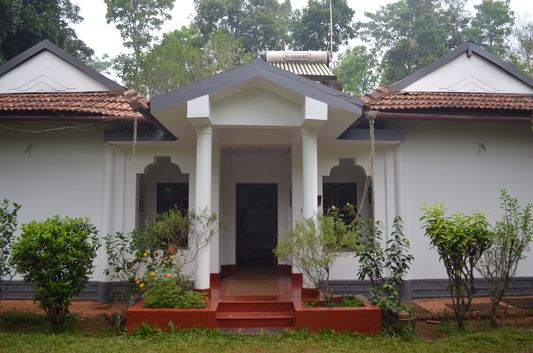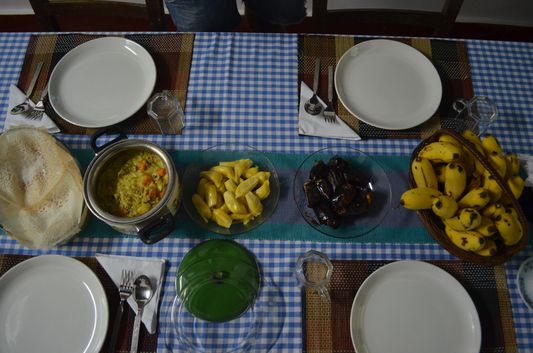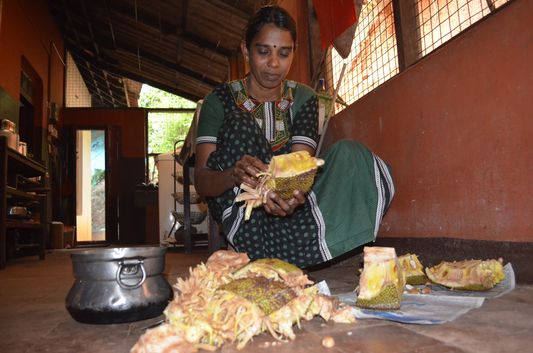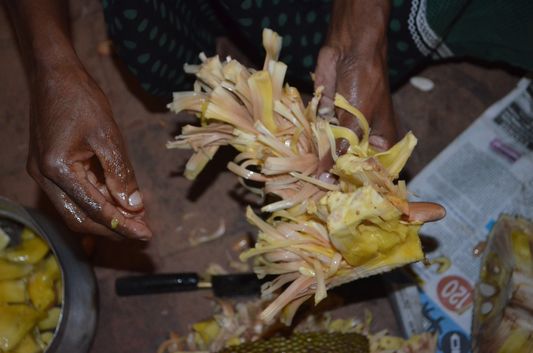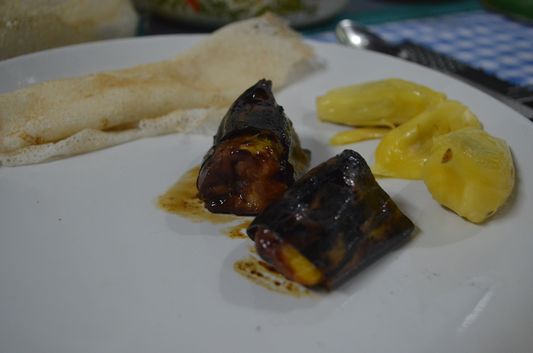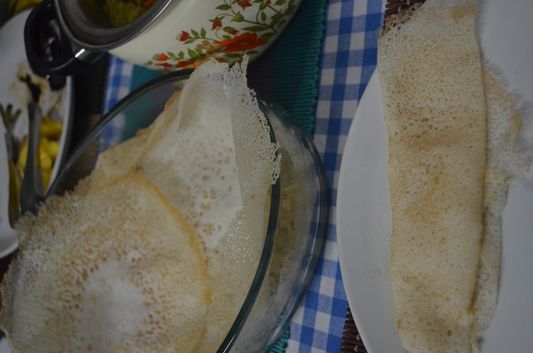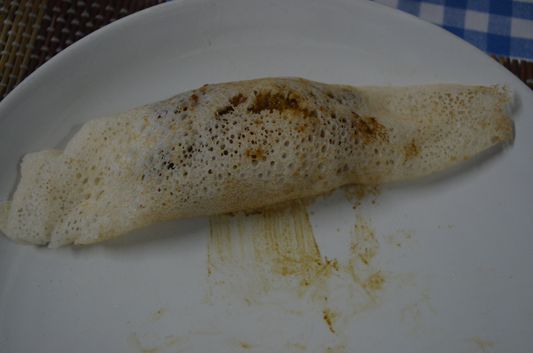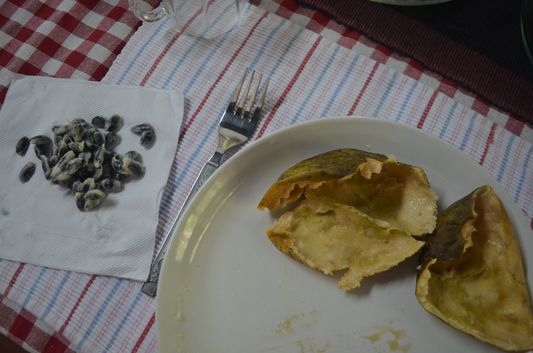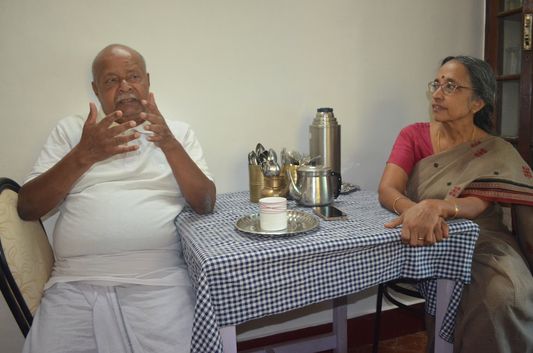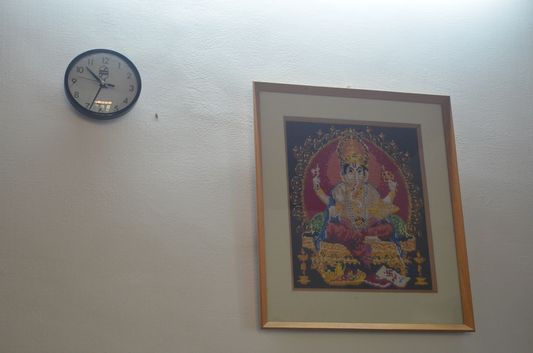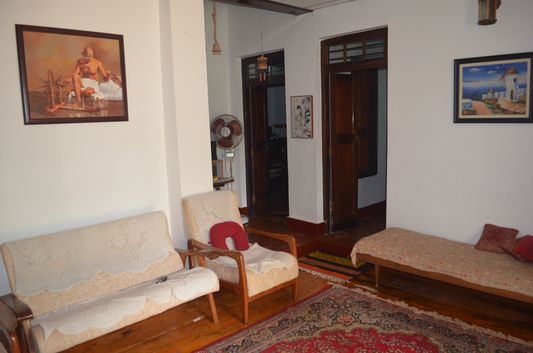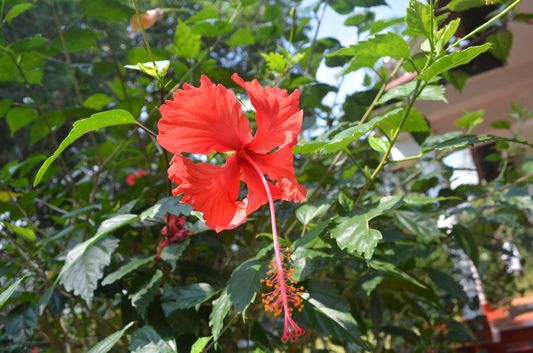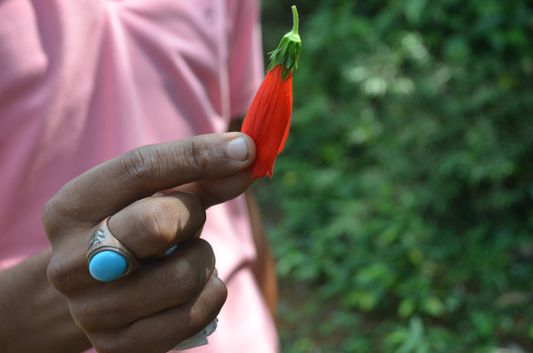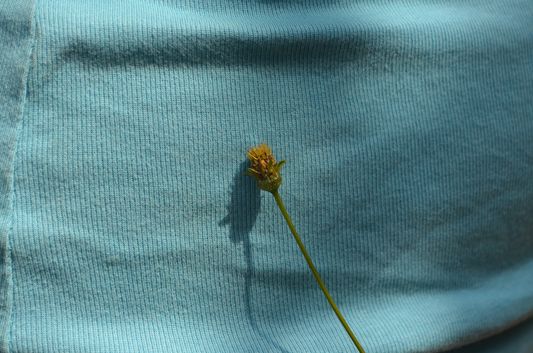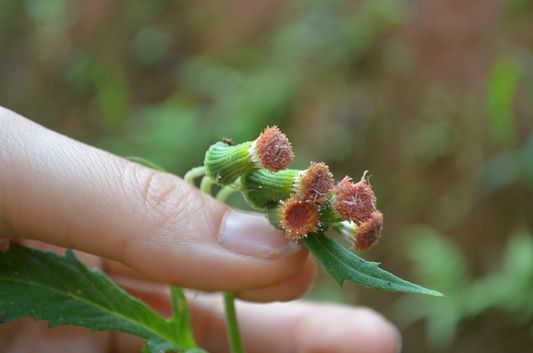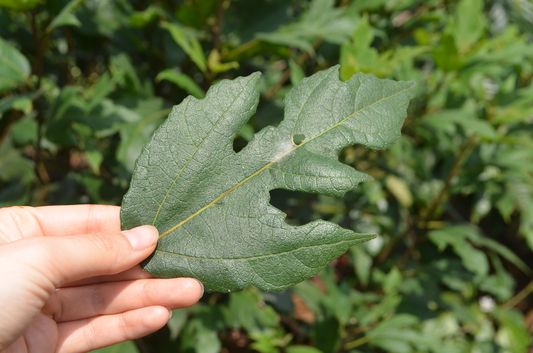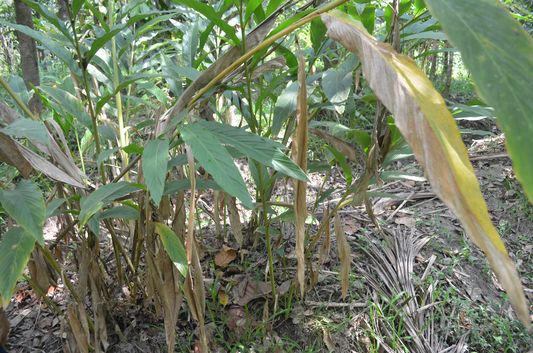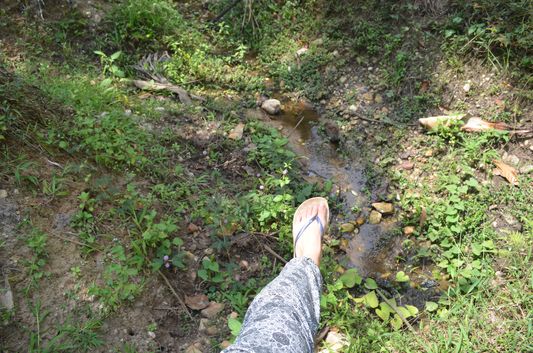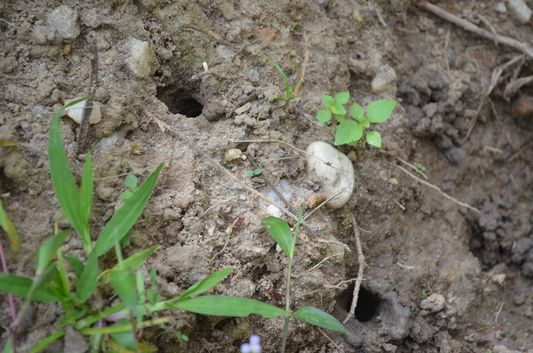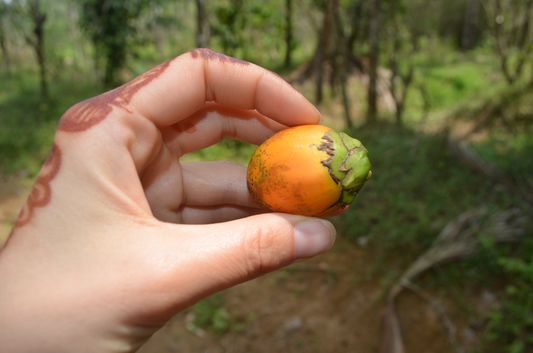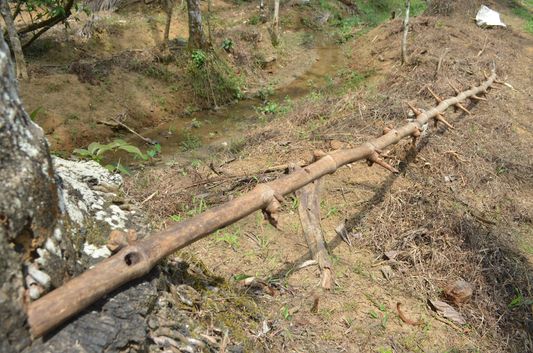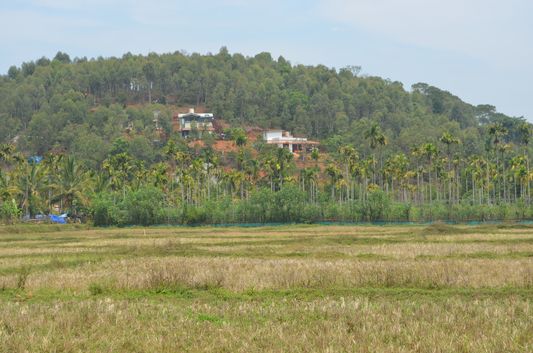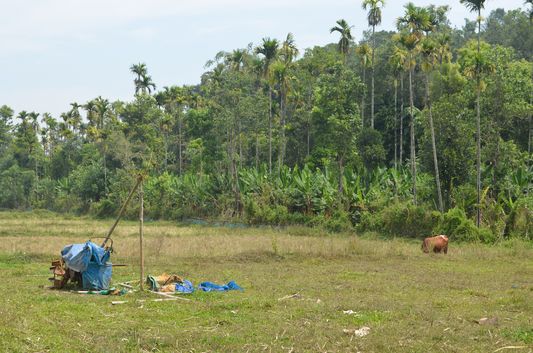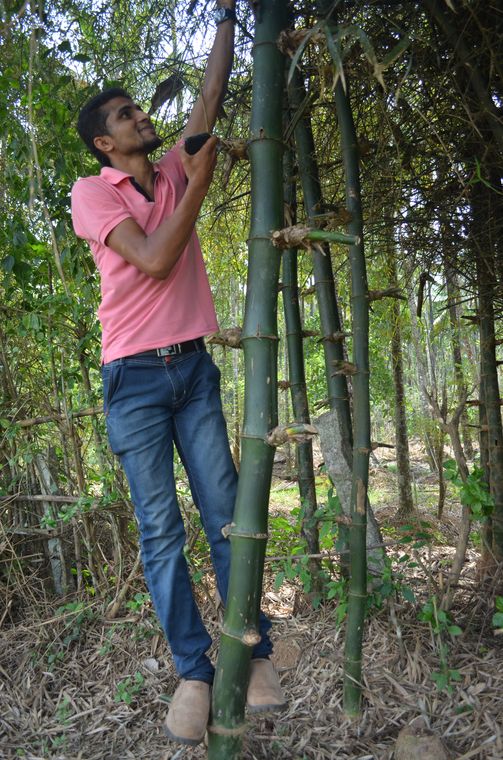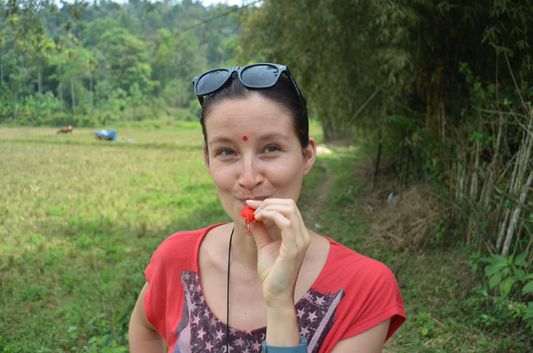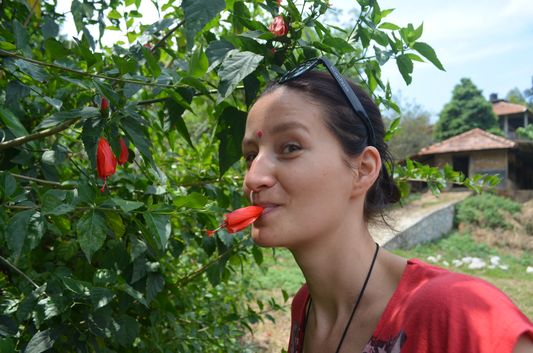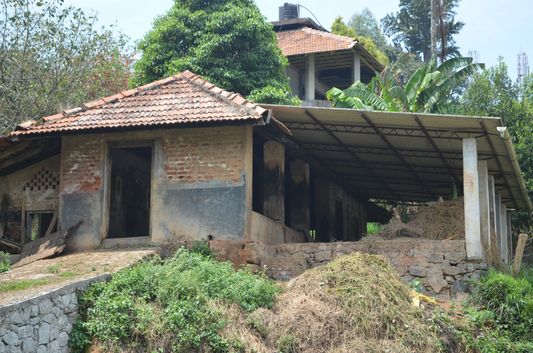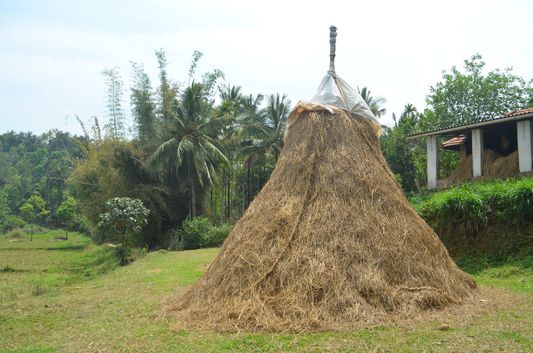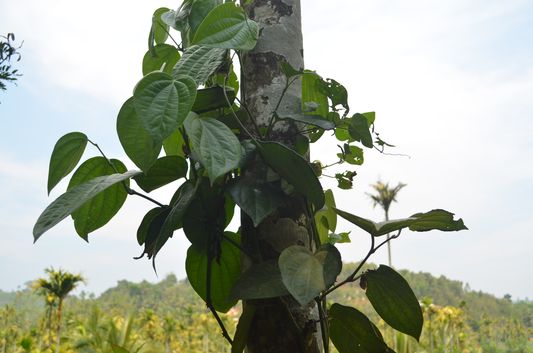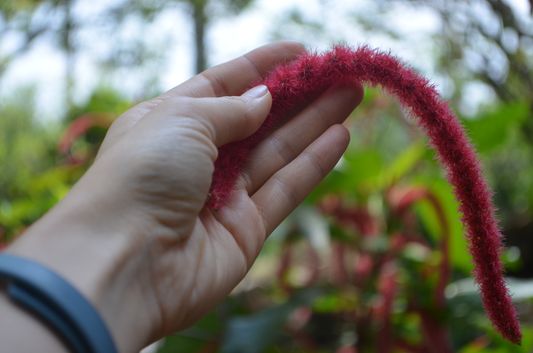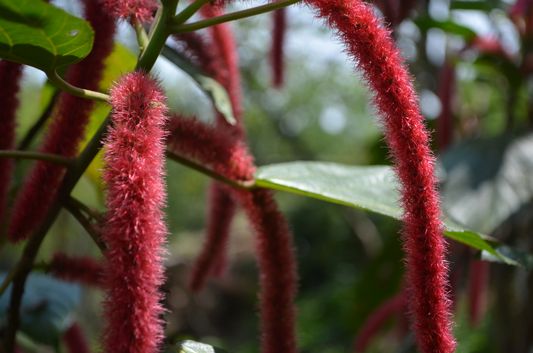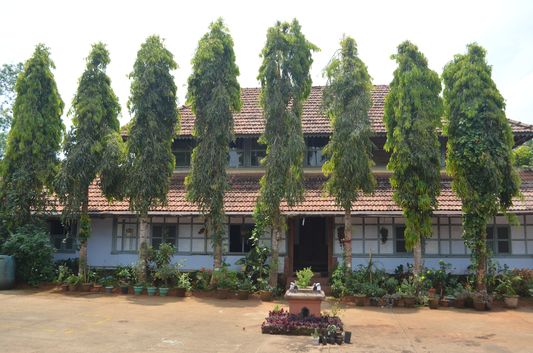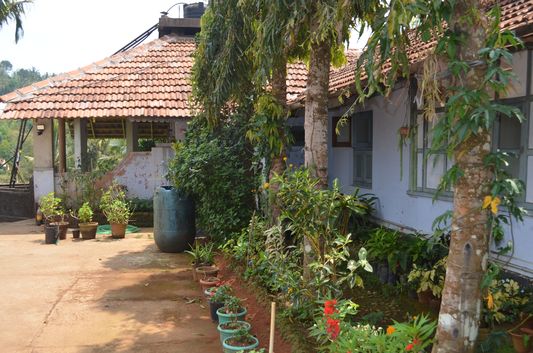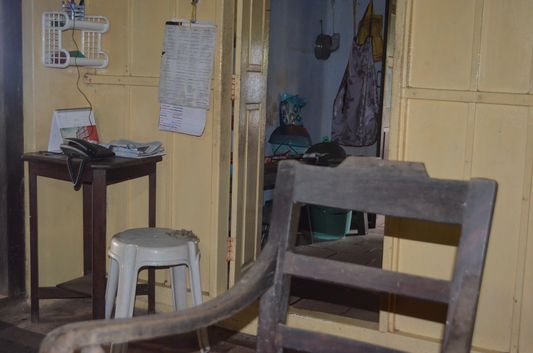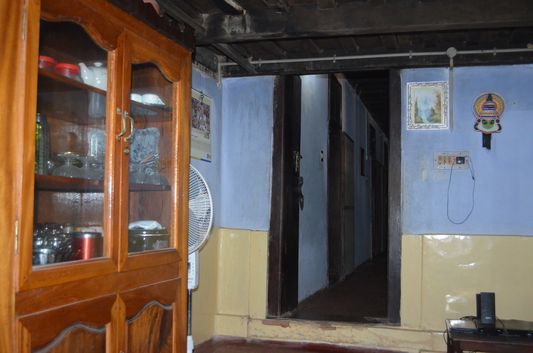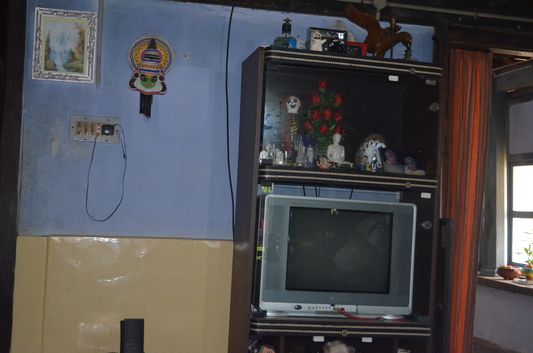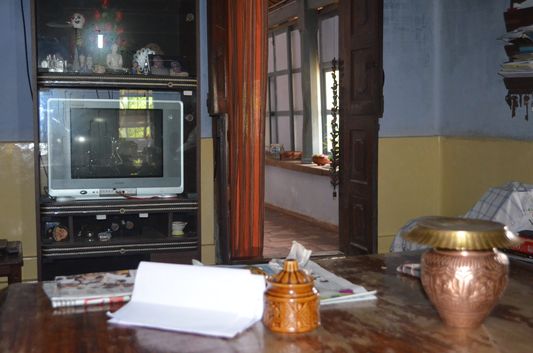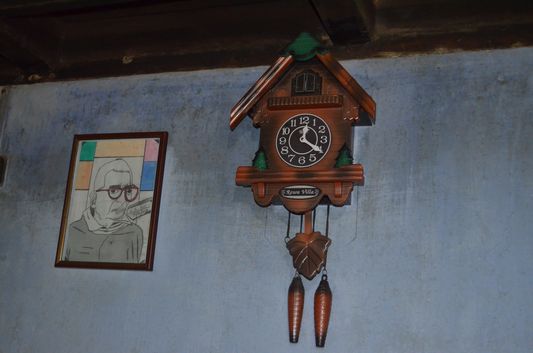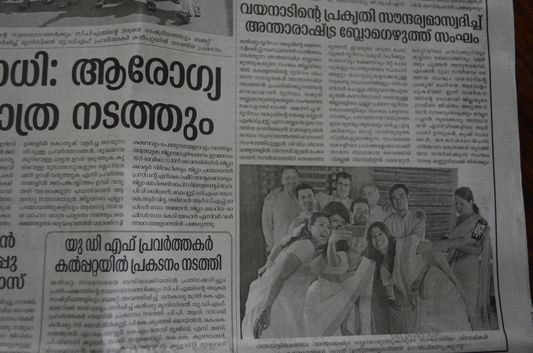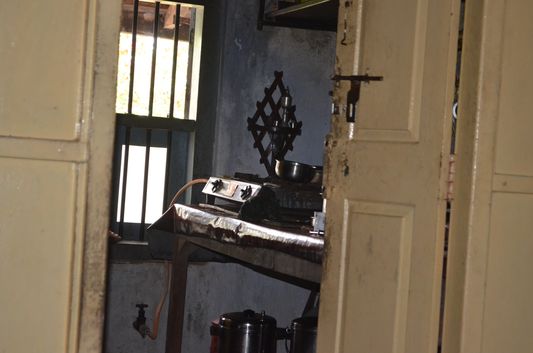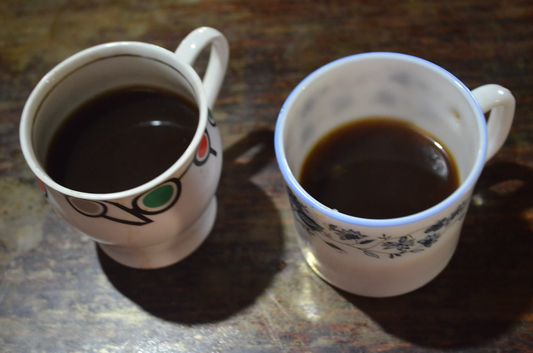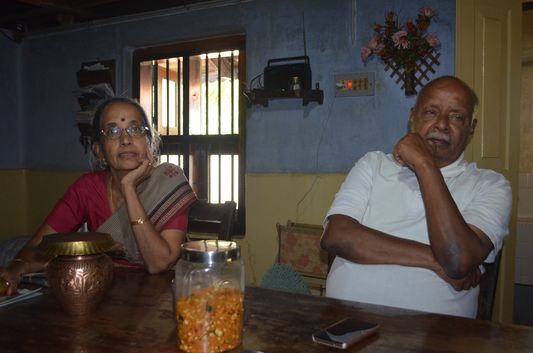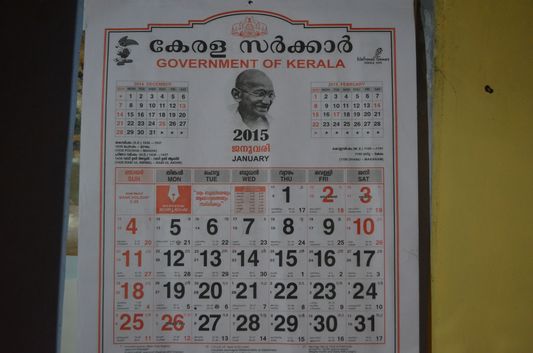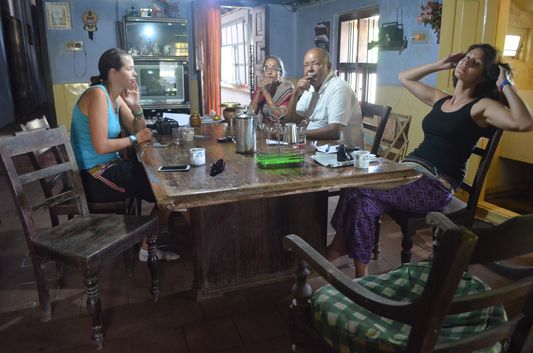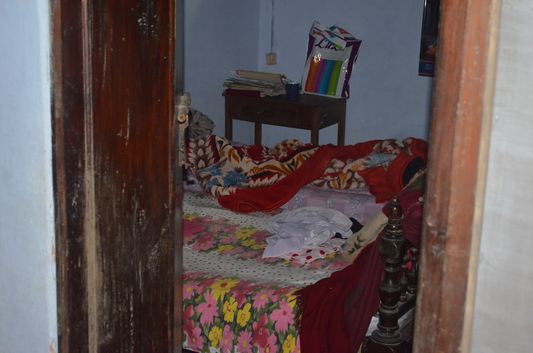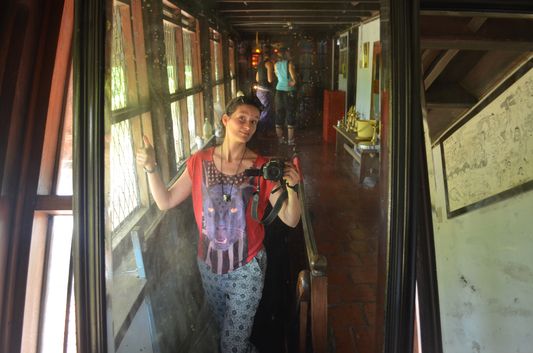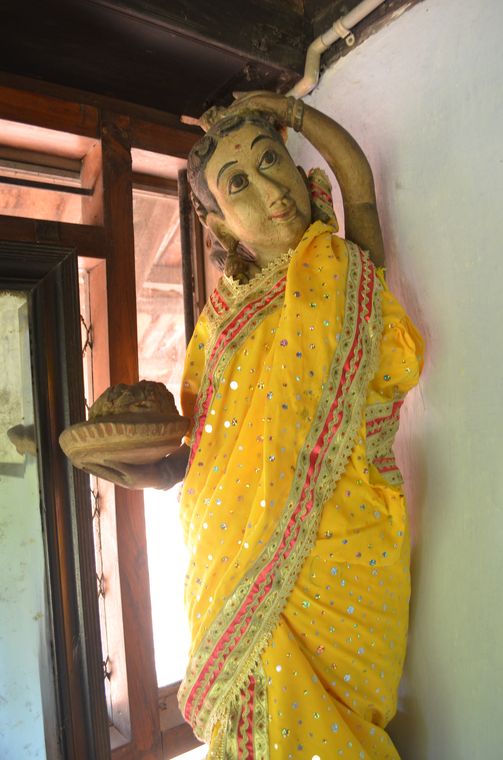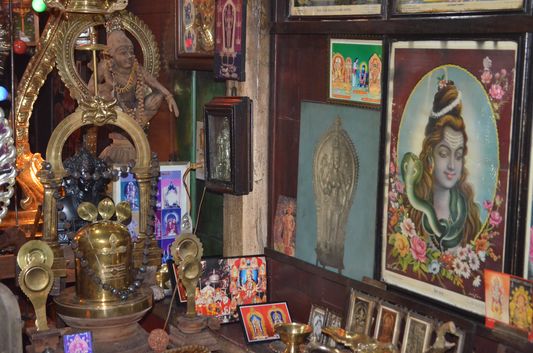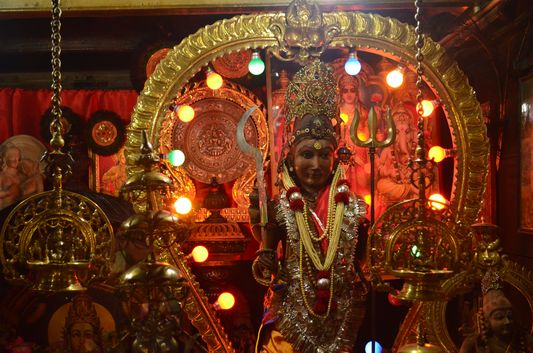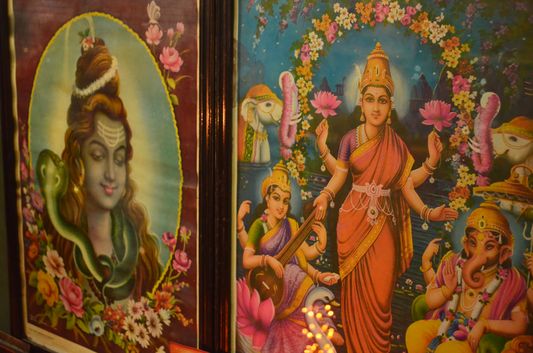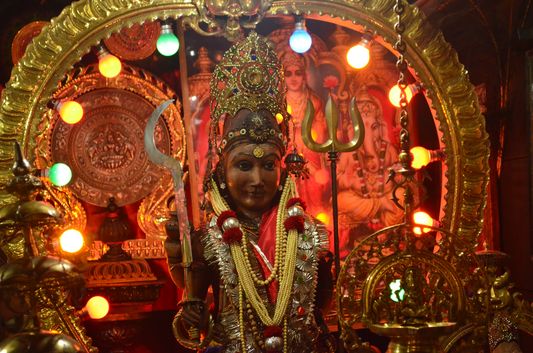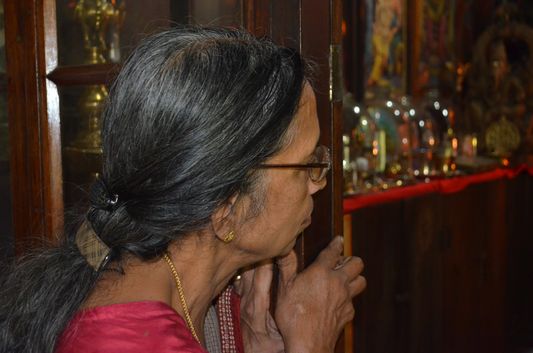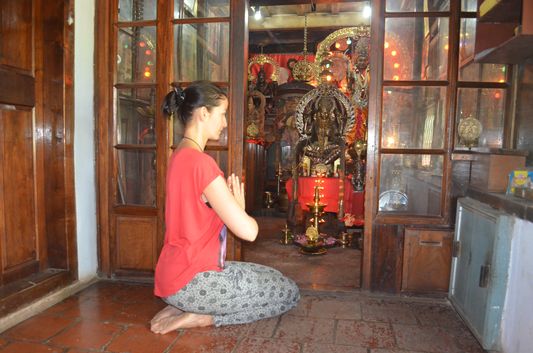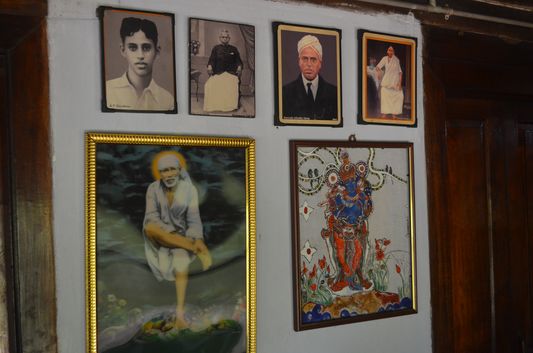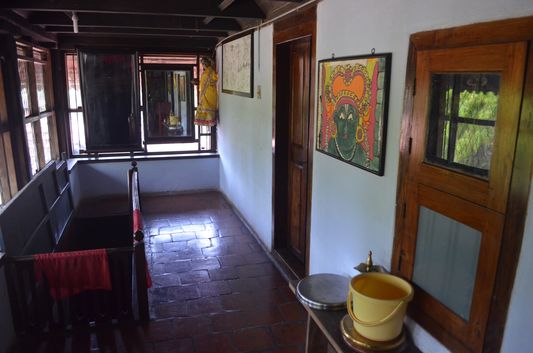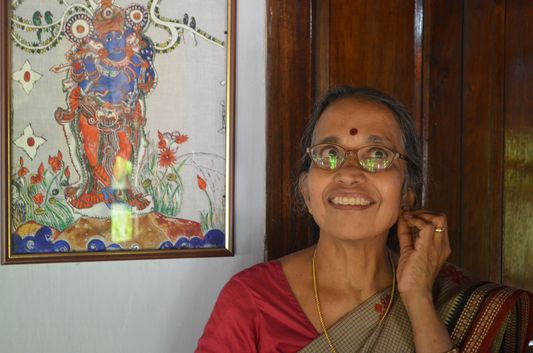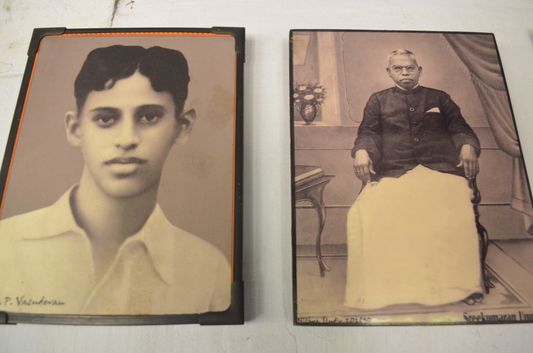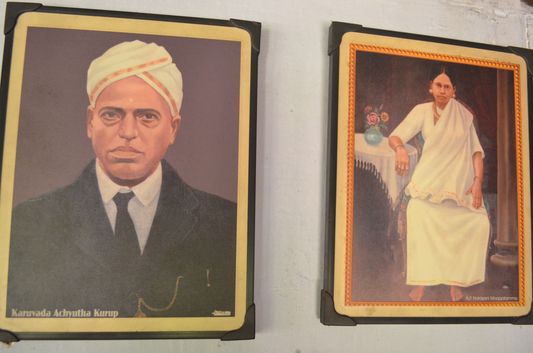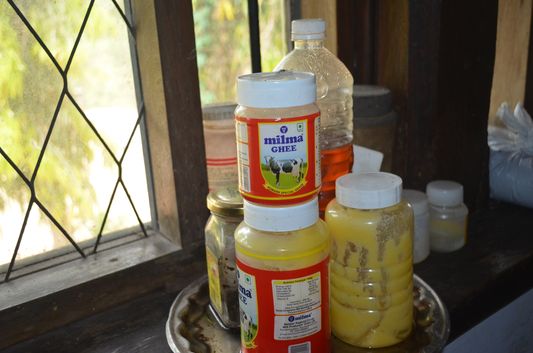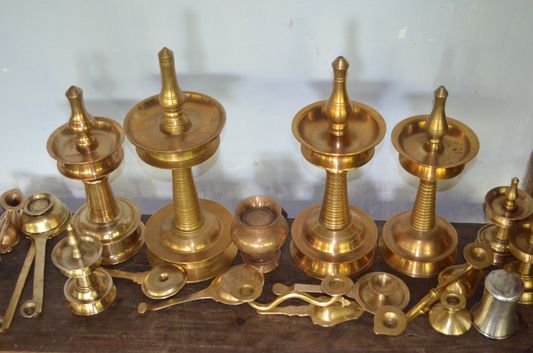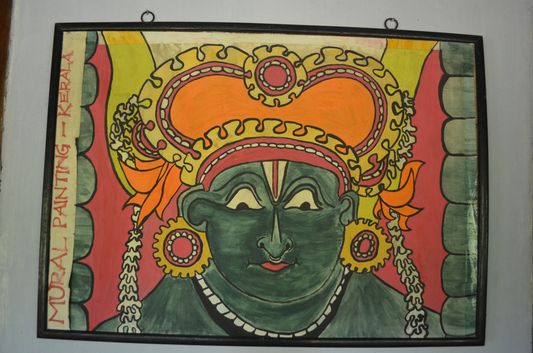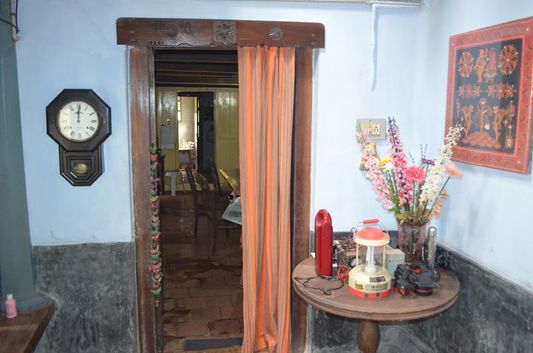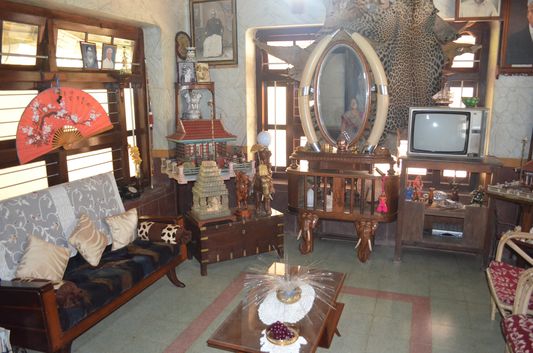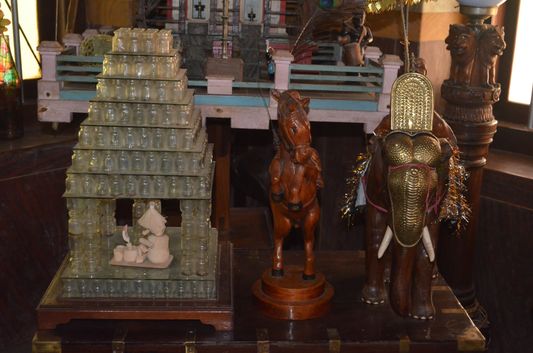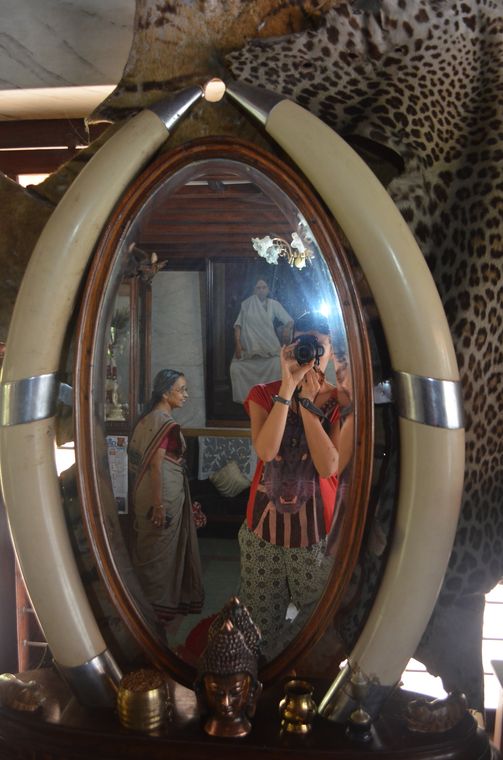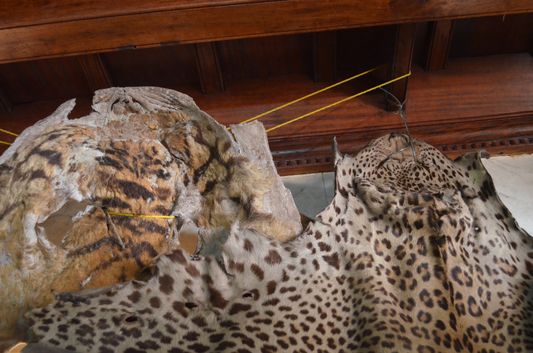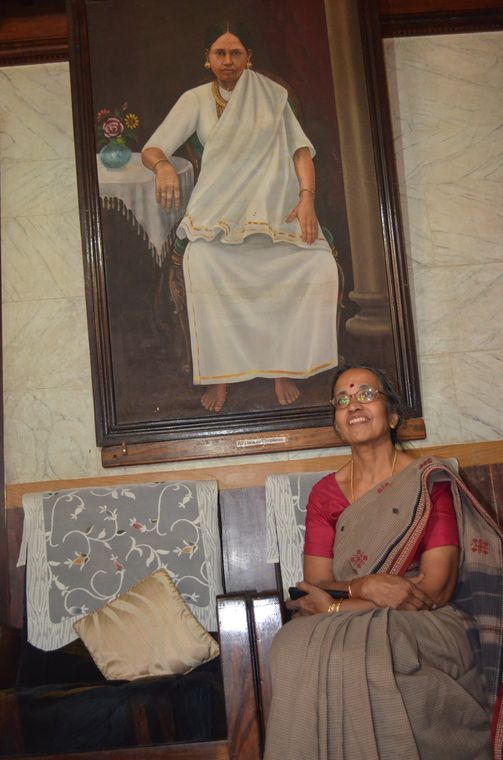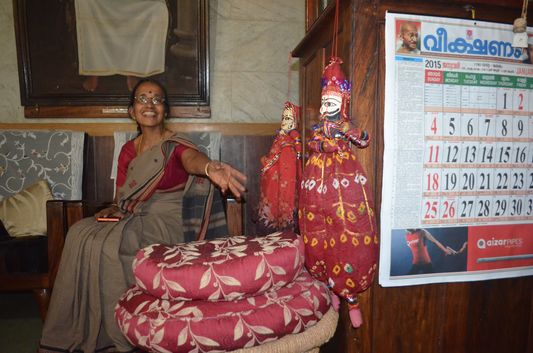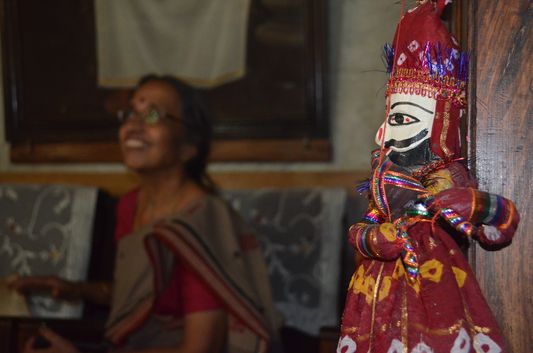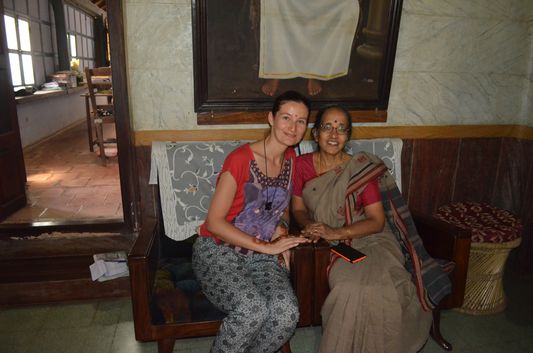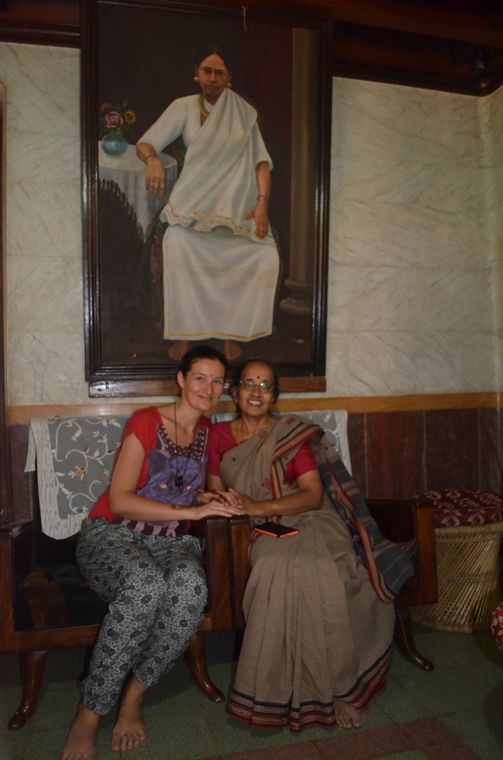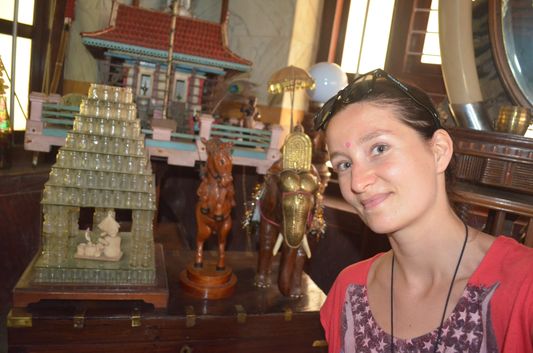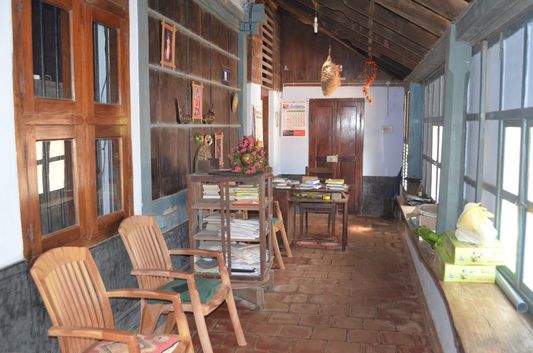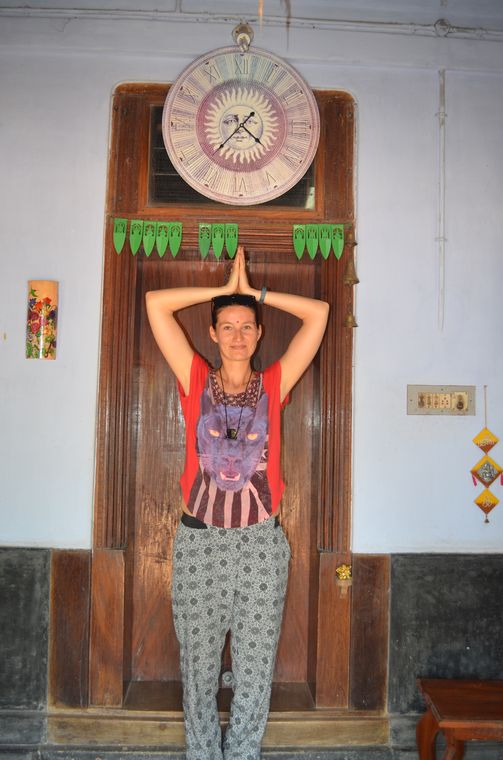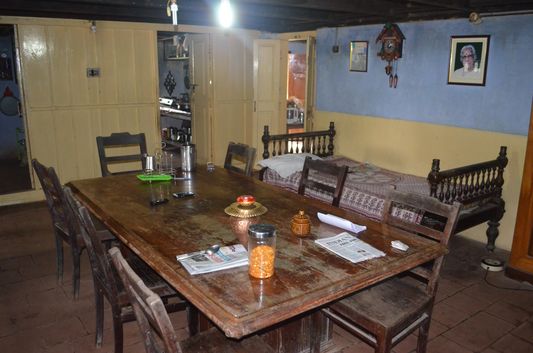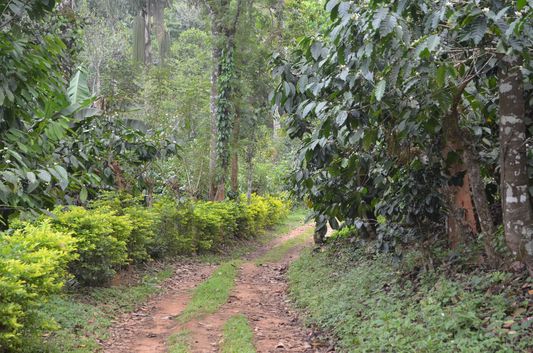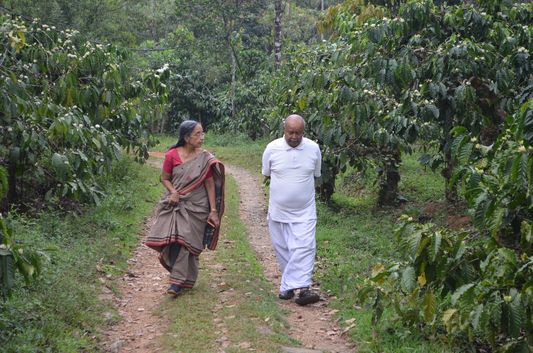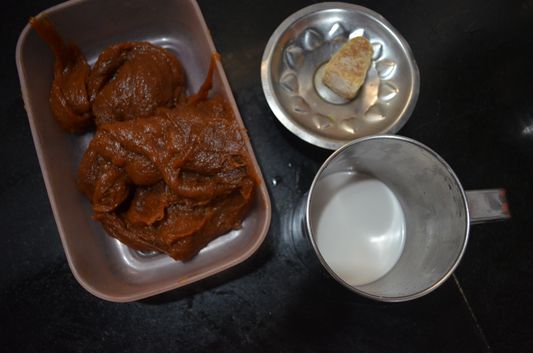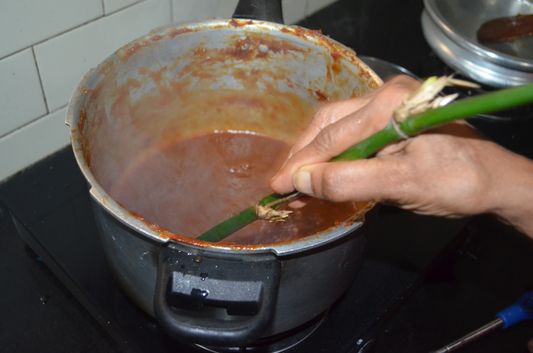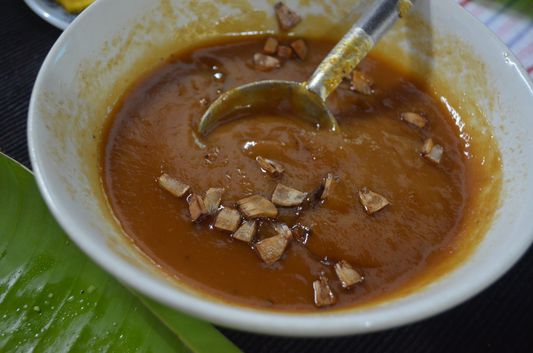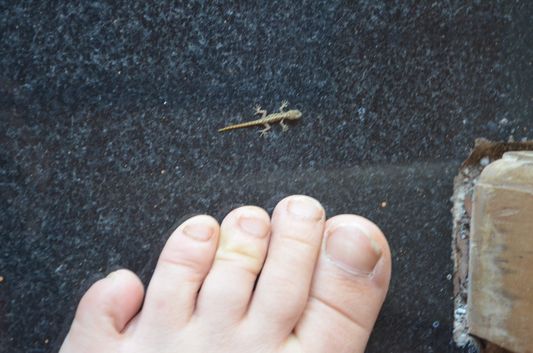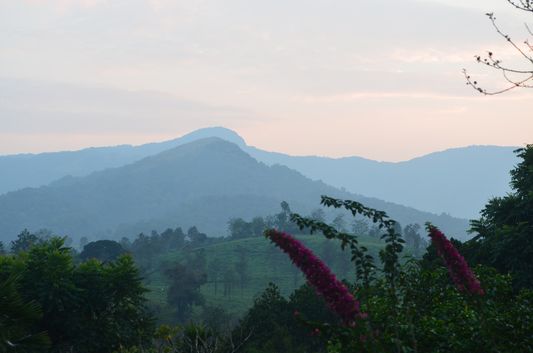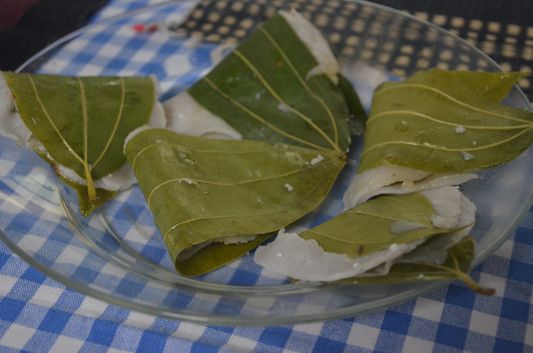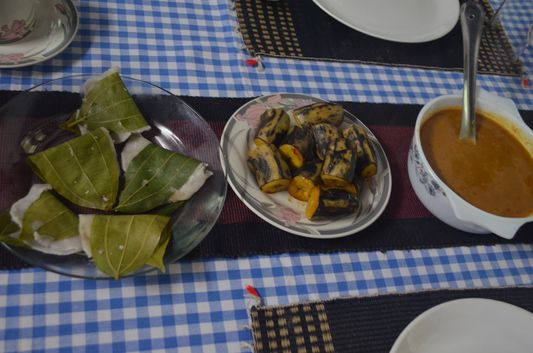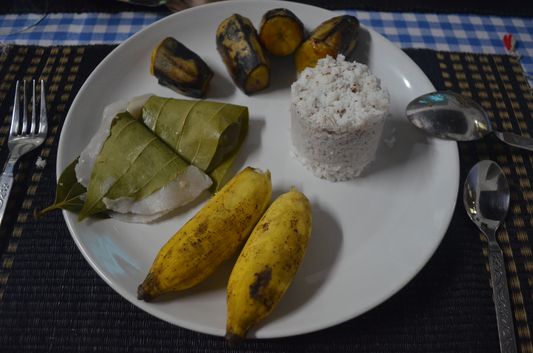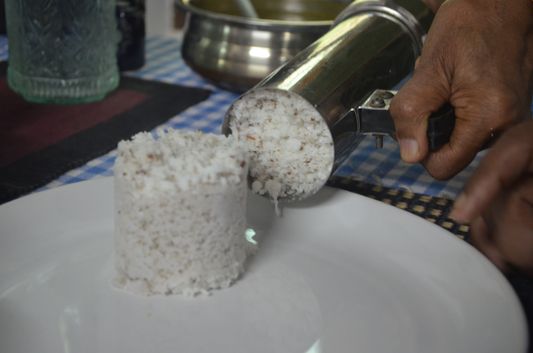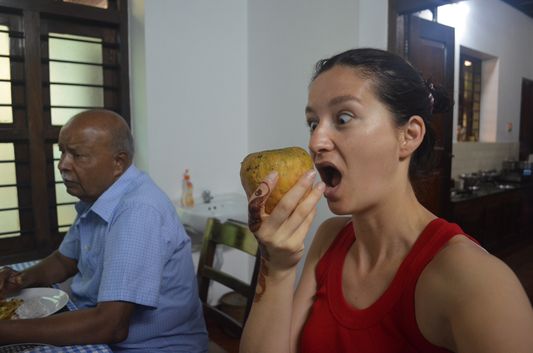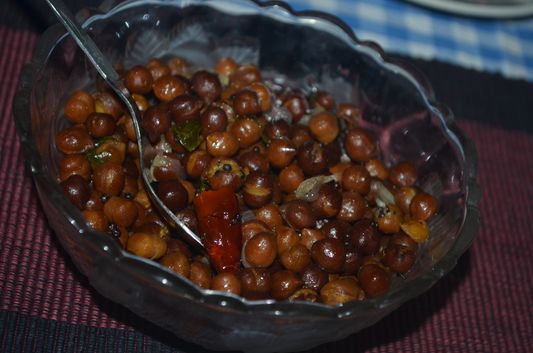25th March 2015
On the way up North to Wayanad, one of the most unspoilt natural parts of Kerala, we saw many trucks on the road transporting construction material and agricultural products because this is the main highway between Thekkady and the other state next to Kerala.
The road was a little steep and very curvy with occasional beautiful views of the surrounding hills. Climbing up to 1,000 m a.s.l. we spotted a few monkeys on the side of the road. It’s the same elevation and the same Western Ghats mountains like in Thekkady we just left that day.
Even though it was in March which is dry summer time, the WTO Wayanad Tourism Organization was so nice they arranged everything for us as Wayanad is a must-visit when in Kerala.June to November is raining time, then summer time. June and July are moonsoon time. The best time to visit is when everything is green and full of water which is right after the monsoon.
Our first stop was at Vythiri which has one of the highest rainfalls in the world. We passed through it and I was hoping we were not going to experience any rain here. Not that I did not have enough of sweating due to humidity, but I was eager to explore the most of this ever green jungle.
We got of the bus and Anwer, a thin shy Indian guy helped me with bags. Together with Adrianna from Bulgaria and Anna from the UK, fellow travel bloggers who were going to stay at the same Wayanad home stay Pranavam with me, we took a taxi up a little hill to the entrance.
We walked up yet another curve to second floor of the building. I was in a shock once Anwer opened the first room.
”What? There’s two floors? Wow!” I jumped out of happiness. ”All three of you have a room like this one.” Anwer calmed us all down. Good we did not have to choose between different ones.
Straight away I put all my baggage by the door and took the steps downstairs to the room. After my habit of jumping on bed, I used the bathroom, took some quick pics and walked down the hill with girls.
We were about to have our first dinner with the Wayanad home stay Pranavam owners, Mrs. Rema AP and Mr. Ravindran, both in their 60’s, I believe. Mr. Ravindran is not only the WTO Secretary, but he was also the one who in 2000 came up with the idea of opening the first home stay just in their house with one room for rent. Later on, in 2007 the family built the big building with 4 identical two-storey rooms where we were staying, too.
Our first dinner together was really tasty. I could see ripe jack fruit from the inside, take a photo with it (very heavy!) and I also ate it for the first time in my life.
We ate:
- Dosa with potatoes and veggies
- Spicy coconut chutney
- Cooked tapioca root
- Unripe jack fruit called Upperi
I also learned at dinner that:
- Green chilli is super spicy but according to ayurveda it decreases your cholesterol level.
- Mangoes are not tasty here because they need hot climate and not the Wayanad mountain climate.
The history of this home stay is pretty interesting.
”We inherited this land from my grandmother and then my mother. In the past, everything used to be shared only with the other women in family. Nowadays, sons usually inherit the same part so the heritage is divided equally. This area used to be a coffee plantation and a paddy field. Still some of it grows here now, however, we also grow many spices.” calmly explained Rema. ”This building it was my father’s hospital; he was a doctor healing indigenous people, mostly. Before we had lived in Kochi and came back here only 1997. We have two daughters born in 1970’s; one lives in Dubai and the other one in Iraq.” proudly continued Rema.
“I really hope you are going to enjoy it in here” Rema said once all the ”mmm, yummy” sounds after dinner changed into ”I’m so full.”
“Lonely planet says Wayanad is the prettiest part of Kerala so for sure we will” Anna said.
“Can we ask you about Hinduism later on?” Adrianna asks.
“Of course, that’s where you learn something. I am happy to find out more about your cultures, too. It’s the nicest part of the whole experience, sharing.” Rema smiled once again.
When putting my flip flops on by the door, I looked up at the big photo of Mahatma Ghandi on the wall in the living room which caught my eye already when I first entered before dinner. ”We worship Mahatma Ghandi. Like Nelson Mandela, they were very holy people.” Rema answered as if she heard my thoughts.
Back in my room, I did not quit enjoying the fact we were going to sleep at the same place for 3 nights! That was like 2 more than usual. Which not only meant no packing and unpacking every day, but I could also wash my clothes and there was enough time for them to dry up on the balcony.
The coolest thing was the whole design of the room when I could walk in a circle from the bedroom to bathroom and take another door by the shower to get to a small part of the room with stones on the ground. Foot massage right in my room, awesome! I also enjoyed the pretty ceiling and the orange Ayurvedic soap which truly smelled nice.
Plus, it was not hot and humid. What a difference! I even woke up feeling cold at some point. Before going to bed, I saw a 10 cm big grasshopper just outside by Adrianna’s room.
The first thing I did the following morning was to go out to the terrace and breathe. I sat down on a wooden chair and meditated for a few minutes. It looked more humid and very misty, just like after the rain.
we wereAfterwards when singing, a 3 cm grasshopper landed on my butt when taking a shower in the morning. When I shared the experience with the others in our group, I got a funny reply. ”n Kerala grasshoppers are a sign of prosperity.” Well, let’s see, I told myself …
We shared breakfast with the family again. First, I ate some raw small bananas, and then tasted long cooked bananas which can be found only in Southern India. And for the first time I tried raw jack fruit (not so easy to spit all the seeds inside but the taste makes it worth it) and white pancakes vellappa (vella means white.)
”Almost everything we eat in Wayanad is grown here. Most of the activities and accommodations follow the sustainable tourism. Many places belong to UNESCO.” Rema tried to overwhelm us with basic information.
We were supposed to visit the indigenous tribes but unfortunately, it was a day of strike which meant no private vehicles on the roads 6 am to 6 pm. Meant just one thing, free time! ? I had a lot of work to do on my laptop but the wifi was not working so I decided to join the girls when Anwer offered us a plantation walk around Pranavam.
During an easy walk (I was wearing just flip flops), Anwer taught us the basic information about some plants grown there.
We saw and learned:
- Touch-me-not plants I knew from Costa Rica already – they close the leaves once you touch them, and are applied as a paste for cuts and bruises to heal them.
- In the morning we can hear cicadas and at night crickets.
- The best time for bird watching is at 6.30 or 7 am.
- The white coffee flowers only stay open for 3 to 5 days and then the flowers dry up, fall off and the following 6 to 8 months the coffee beans grow. And when they turn from green to red, they can harvest them. These coffee plants at Pranavam are 35 to 40 years old. They always look the same as they keep them cutting to the same height – the coffee trees are always kept 8 to 10 feet tall so people can get the beans when standing, so they never have to climb up the trees. The way to harvest them is to put a big sack on the ground, pick them and let them fall in the bag. To harvest 1 kg of coffee beans, the picker gets paid 3 to 5 rupees. One person can harvest around 200 to 250 kg per day. To dry coffee beans it takes 6 to 8 days. Harvesting only takes place in December and January, sometimes even in February. Then after drying the beans turn black (still with the skin.) Then they remove the skin and only the beans are roasted so they turn black.
- We saw both Robusta and Arabica coffee – their leaves and shape of plant are different.Anwer also explained us abut other kinds of coffee.
- Civetkat coffee only the best beans from the plants so the outer skin is very sweet but beans very bitter. Kopi Luwak is the most expensive coffee in the world grown in Malaysia, not as much in India, though. More than 100,000 rupees per 1 kg of this cat poop coffee. It’s a night cat eating it and its poop is collected. This cat has the capacity to eat just the best beans but it’s difficult to collect them then all around the plantation.
- Wild jack is possible to eat. It looks like a small jack fruit but difficult to collect as it grows very high in the trees.
- One jack fruit can weigh more than 30 kg. It is the biggest fruit in the world, indeed.
- Out of known 15 varieties of bamboos, we saw 3. I had no idea some of them have rice! Bamboo sticks get rice every 40 to 50 years. We saw the elephant bamboo which is tall but not thick. Rice grows high on top of the bamboo which makes it dangerous to harvest. So it is not people but rats that collect the rice. The rats bite rice and then store them in their holes so people steal rice from rat holes close to bamboos. It costs around 250 to 300 rupees per 1 kg of bamboo rice because it is not seasonal. It tastes a bit different but has the same use as normal rice. Normal rice costs from 20 rupees up per 1 kg.
- Reed bamboo is not so tall and its used for tribal hats and flute musical instruments. It works as natural air conditioning when walls are made form it. Nature is so powerful!
- One kind of bamboo is called ladder bamboo. You have to cut it when it is green, then put weight on it for one year to make it straight and dry when it becomes less heavy. It turns from green to black when drying up. White marks on the bamboo mean it is mature. We saw a man collecting cloves up in the tree and he got up there using the ladder bamboo.
- Cardamon grows in shade and at the bottom of plantation where it gets plenty of water. Cardamon is called the Queen of spices.
- King of spices is pepper. It was used as money to buy stuff in old times and thus known as black gold.
- Bitter leaves and bitter nut and lime and tobacco is chewn for five minutes.
- We saw holes of yellow crabs. People used to (and some still do) eat these crabs but they disappear very fast when they see any movement. The trick is to insert a coconut leaf inside the hole, the crab holds into it and then it is cooked to be eaten.
- From the thick plantation we walked to the edge of an empty already harvested paddy field. I remembered what our guide Manoj told us already on the bus two days ago ”Wayanad means land of paddy fields. But nowadays very few people still cultivate rice in the area.”
- Huge shacks are used for roofs, cows to eat and to put fruit on it to dry up faster.Cat’s tail is the pink tail plant growing on a small tree. Just for decoration, looks really cool. Tropical soda apple plant with thorns has small yellow fruits which are good for pain relief. Spanish needle plant that sticks to your clothes when you throw it.
- Cupils shaving brush is the feed of wild rabbits -it has small orange flowers. Many wild rabbits in here around eat it.
- Sleeping hibiscus is a sort of hibiscus that never opens up it flowers.
- Very tall fishtail palm with leaves eaten by domestic elephants.
- Other trees we saw were custard apple, sugarnut, cinnamon, two types of basil, thyme, turmeric and ginger. Also sunpeper – rough leaf to clean furniture, two types of cocoa plants – green turns to yellow and brown turns to hard reddish colour. Precious sandal wood is used for oils and smelling sticks.
Once the plantation walk was over, we ended at the beautiful house Rema wanted to show us earlier. The ancestors’ house is more than 200 years old and Rema’s brother, the local Chairman of Congress in Wayanad with his wife live there nowadays.
Rema was not born here but in Chenai where her father was a doctor. Then she grew up here. I could not get enough of the smell of so many spices all around the house. I was surprised by how fresh and cold it was inside the house, you could not feel the heat at all. After the walk, we were dying of thirst.
The sweet family offered us pink water called karingali vellam which is water boiled with karingali bark, sometimes basil as well and so good for digestion before meals; also diuretic.
We could also try the speciality of the house – medicinal coffee with ginger, onion, black tulsi, pepper, coriander, garlic, cumin and jaggery to clear throat. When the water is boiling then you put the grounded spices and jaggery. At first I said no as I don’t drink coffee but then I gave it a go. Wow, so tasty! No taste of coffee at all. I could only taste all the spices and onion.
Afterwards, Rema was kind enough to take us upstairs to their little family Shrine.
”You know, it was mostly just Brahmins who could enter temples in Kerala. But we belong to Naia so we built this shrine here for us.”
The shrine was decorated by many statues, images, candles and other objects I don’t know the names of. It was mesmerizing! I could spend hours just taking photos of it and listening to Rema’s stories.”Our body is our temple now and inside it there is the God.” We found out more about children and their names.
On the 28th day after a girl is born her ears are pierced because the same star borns again on the 28th day according to lunar calendar. You give the name to the child on the 28th day as well. Of course, nowadays people have babies in hospitals. Every name means something, for example Sooraj means sun; Manoj means beautiful light. My name Rema is name of a Goddess. Then the kid is introduced to knowledge before it reaches its 3 years. For example he is asked to make things. With gold you write ”OM” on his tongue. Then in rice you write things which means that what you say it should be like gold. Here women do not change surnames when they get married so they keep their own surname and not their husband’s.
Rema also showed us how they use stones to make a paste from sandal wood.
”In the morning you use sandal wood tilak dot on your forehead to cool down your third eye chakra.”
”Bhasma is from cow poop; poop balls are dried and on Shivas marriage day you light it and make powder of it. It is what you make a tilak dot of on your forehead at night to heat it up.”
Later on, we slowly said goodbye to the family and very stylish old house visiting a sort of a living room with ancient family objects and started walking towards our home stay building.It was only when walking when I found out that home stay Pranavam means OM, like a u m letters.
“Chanting om is healthy for both your body and mind. Your breathing becomes normal, right?”
said Rema with her cute smile.When she came here from Kochi, she wanted to have a guru. “When you aspire to something, you get it. And so did I. When I moved here years ago, I found a woman here. She became my guru telling me about breathing, OM and mental health, and all other things I wanted to know about” finished our spiritual conversation Rema just before we reached the home stay.
Then our lunch was so spectacular and I took many photos of it. We were served traditional Kerala meals on a banana leaf and they even prepared vegan options for me (instead of milk, coconut milk was used.) So grateful! Truly finger-licking experience.
For last breakfast on the following day we had traditional puttu rice with coconut which is made in a special tube so it always looks the same when served on a plate. And also fried kardala chickpeas together with fruit and ada – the very yummy sweet coconut and jaggery dessert wrapped in cinnamon leaf which gives a special flavour to it. Oh my!
Just to wrap it up, because of low water in the river we could not do the bamboo rafting, and because of the strike our tribal experience was also canceled, so we drove all the way up to Wayanad for so many hours in vane.
Anyway, I was more than happy to experience the real life with a family, share meals with them, learn more about local plants and habits, and taste delicious home-made vegan meals. Thank you Wayanad home stay Pranavam so much for such a unique opportunity!
